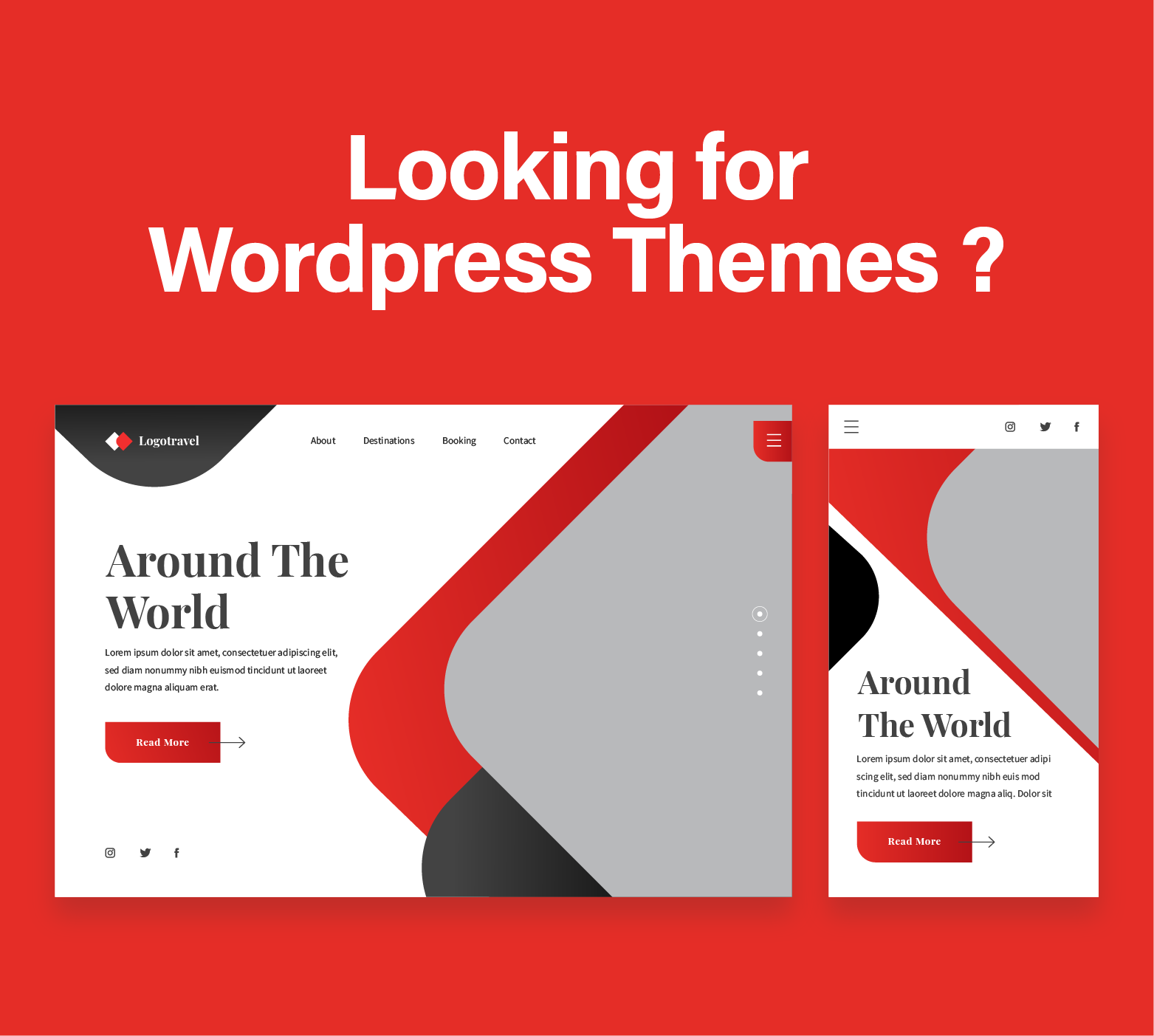Choosing a content platform feels like choosing a gym membership you will actually use. Both Squarespace and WordPress promise sleek sites, flexible tools, and respectable speed. Each can power a professional brand, a restless side project, or a profitable store. The trick is matching your goals and skills with the right feature set.
I will keep this honest, practical, and a little conversational so the decision sticks.
I have built on both stacks for clients who care about visibility and conversions. The same questions appear in every kickoff. How much control do we need, how fast can we ship, and who will maintain the thing after launch.
Those answers decide the winner more than marketing slogans ever will. I have learned that momentum beats theory when deadlines grow teeth.
Start with outcomes before comparing features
Your platform should serve your next year of work, not just your next week. If you want a polished portfolio with limited moving parts, Squarespace shines with focused templates and tidy settings. If you expect complex content models, advanced routing, and editorial scale, WordPress offers deeper control. That split appears quickly once teams start publishing at volume. I ask clients to share the roadmap before we even open a theme gallery.
Think about your internal roles and the pace of change you expect. Small teams often want fewer decisions and fewer knobs to turn.
Larger teams need custom workflows, reusable blocks, and strict governance. I enjoy the moment when a client realizes their preferred workflow already points to one platform. It makes the next steps painless.
Technical architecture and flexibility
WordPress behaves like a content operating system that you can shape as you grow. Custom post types, taxonomies, and fields let you model case studies, resources, and product guides without awkward workarounds.
You can direct URLs, craft templates, and attach schema in consistent patterns. Developers love this flexibility because it scales with ambition. Editors love it because good templates enforce quality.
Squarespace favors a curated environment with predictable guardrails. You work within sections, content blocks, and sane defaults that reduce risk. You can ship a beautiful site quickly and keep it clean long after launch. The tradeoff is depth of customization, especially for complex relationships between content types. That is fine if your structure stays simple and your publishing calendar remains focused.
Design and content editing experience
Squarespace wins fast starts with polished templates that look great out of the box. The editing interface feels coherent and approachable for non technical teams. You can align typography, adjust spacing, and manage galleries without hunting through settings. I have watched nervous founders relax after five minutes in the editor. Less panic, more publishing.
WordPress has improved editing dramatically with modern blocks and patterns. You can craft reusable sections that carry design discipline across the site. Properly configured roles and custom fields keep editors inside safe lanes while developers manage the deeper pieces. There is a learning curve, yet it pays off when your content program expands. That investment reduces inconsistency later.
I still celebrate when an editor uses a pattern instead of reinventing a layout during a rush.
Performance, hosting, and maintenance
Squarespace provides hosting, updates, and a tuned stack by default. That means speed and security are managed for you, which is a relief for lean teams. Fewer decisions create fewer mistakes, and fewer mistakes create calmer Fridays. You trade some freedom for predictable operations. Many founders sleep better with that trade.
WordPress performance depends on your host, your theme, and your discipline. Choose a solid managed host and a lean theme, then enforce budgets for scripts and images. Add a content delivery network and watch real world metrics improve. I have seen sites cut load time in half with image compression and careful lazy loading. That kind of win shows up in revenue sooner than people expect.
SEO features and real world results
Both platforms can rank, and both power sites that win competitive terms. WordPress offers granular control over titles, meta descriptions, structured data, and canonical logic through mature plugins and custom templates. You can tailor sitemaps, modify robots rules, and attach schema at scale. Those knobs help when you handle thousands of pages and need clean patterns. Search engines reward that consistency.
Squarespace includes sensible SEO defaults out of the box. It manages titles, alt text, and basic structured data without heavy setup. You can plug in analytics and manage redirects through the interface. The platform limits dangerous customization yet keeps essential controls within reach. For smaller catalogs the built in tooling feels refreshingly adequate. Results still rely on content quality and internal links.
Here is a small checklist I use during discovery calls.
-
Confirm who owns keyword research and information architecture after launch
-
Review the sitemap structure and how new sections will be indexed
-
Decide how schema will be attached to templates and content types
-
Align on internal linking rules for hubs, spokes, and related modules
-
Verify image handling, file naming, and lazy loading behavior
-
Plan redirects and content pruning so crawl budget stays efficient
Structured data deserves special attention on both platforms. WordPress lets you compose rich schema for tutorials, faqs, product comparisons, and events with remarkable precision. Squarespace supplies useful defaults and supports many common cases. Rich results depend on accuracy and consistency more than pure platform choice. I still test templates with validators before release, because surprises love launch days.
Ecommerce and membership needs
If you plan to sell a lean catalog with simple variants and tidy merchandising, Squarespace provides a graceful store experience. The checkout is integrated, product pages are clean, and inventory management fits many small shops. The path from idea to live store is straightforward. Supportable is the word that comes to mind.
If you expect complex bundles, custom rules, and programmatic collections, WordPress with commerce plugins provides deeper control. You can craft product templates, dynamic categories, and detailed filters that map to search intent. That extra control invites responsibility for speed and security, which means process matters. I advise staging and careful updates for any serious store. It sounds boring and saves money.
Cost, ownership, and long term scaling
Squarespace charges predictable fees that include hosting, updates, and most essential features. You might add a few paid extensions, but the economics remain simple and transparent. Time saved on maintenance converts into time spent on content and offers. That is a fine trade for teams that value focus.
WordPress starts with low licensing costs and expands as you add high quality hosting, premium plugins, and development time. In return you own the environment and can switch providers when strategy shifts. The budget line items look different, yet the total can be very competitive at scale. I ask clients whether they prefer fewer decisions or more control. That answer clarifies budgets instantly.
Sometimes the best cost is the one that protects your calendar from surprise drama.
A quick decision map you can use today
-
Choose Squarespace if you want polished templates, reliable hosting, and fewer moving parts
-
Choose WordPress if you need custom content models, advanced routing, and granular SEO controls
-
Choose Squarespace if your catalog is modest and your team prefers a guided workflow
-
Choose WordPress if your roadmap includes content clusters, programmatic pages, or complex commerce
-
Choose either if you commit to content quality, internal linking, and steady publishing
- WordPress seo services are more common than squarespace ones
Migration and future proofing
Platform changes are disruptive, so evaluate three seasons ahead. Squarespace reduces operational noise for a long time when your model stays simple. You can still redesign and refresh without breaking core systems. If your business evolves into complex content or integrations, migration is possible with planning. The key is to keep assets organized from day one.
WordPress thrives when needs evolve and structures multiply. You can introduce new content types, redesign templates, and extend features without replatforming. That flexibility feels luxurious when your strategy pivots with the market. Protect that advantage with documentation and a sensible update rhythm. Your future self will send a thank you note.
Conclusion
Squarespace and WordPress both deliver professional websites and meaningful growth when used thoughtfully. Squarespace prioritizes coherence, simplicity, and speed to first publish, which many teams adore.
WordPress prioritizes flexibility, ownership, and deep customization, which ambitious programs eventually require. The better choice depends on your goals, your team, and your appetite for tinkering. Platform debates become easy once those inputs are honest.
If you are still unsure, run a tiny pilot before you commit the entire roadmap. Build the same landing page and a small content cluster on both stacks. Measure editing effort, page speed, and early rankings for a few weeks. The data will point to the calmer path for your specific team. Calm work is usually the best work.
Last line for the road. Pick the platform that makes publishing easy and your coffee taste heroic.








